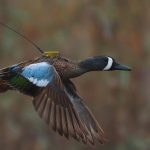← Back
Full annual cycle tracking helps to explain differences in population trends of far eastern curlew
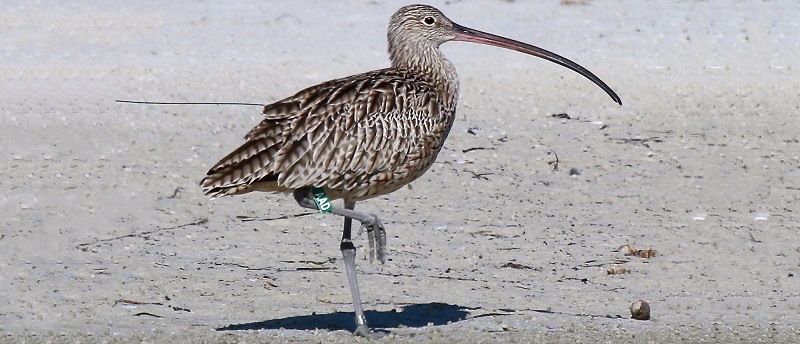
The far eastern curlew is a large shorebird, migrating between Australia and far-east Asia. Some of its populations are more endangered than others. Understanding why this might be is helped by satellite telemetry, including Argos techniques.
The far eastern curlew (Numenius madagascariensis) is a large migratory shorebird, endemic to the East Asian–Australasian flyway. Populations have declined in Australia, where about 70% of the population spends the nonbreeding season. This bird is classified as “endangered” globally and as “critically endangered” in Australia. However, population changes have not been uniform across the whole of Australia, with steep declines occurring in southeastern Australia, whilst the northwestern populations appear to be stable and in some places increasing.
Understanding whether different populations of migratory species mix or stay apart during migration (“migratory connectivity”: see Common nighthawk populations do not stay apart during migrations), can help to explain these differences in population trends and contribute to the conservation of migratory species.
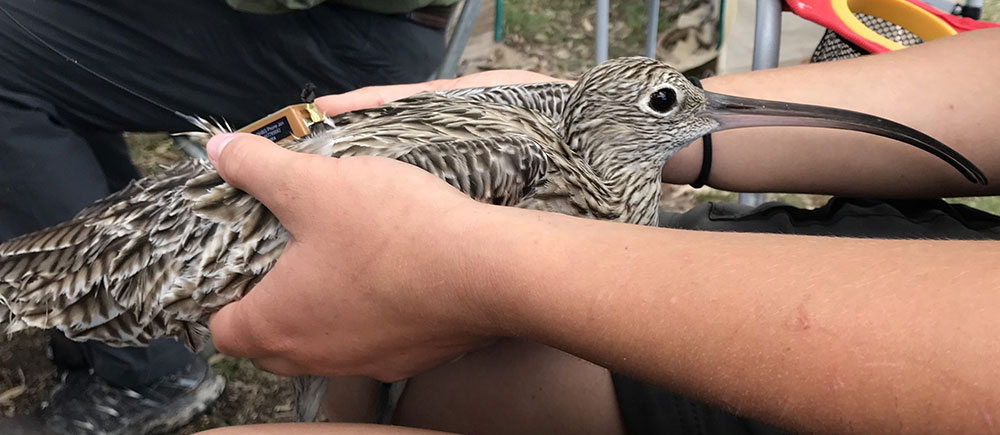
Tracking far eastern curlews
Twenty-one far eastern curlew were tracked with telemetry devices including Argos PTTs from sites in northwestern Australia (Broome, Darwin) and southeastern Australia (Moreton Bay, Western Port). Nine of those birds had at least one full migration recorded (two or more tracks were recorded for six birds), ten had an incomplete recording, and two had aborted migrations. Several site categories were defined (non-breeding, breeding, stopover or staging sites).
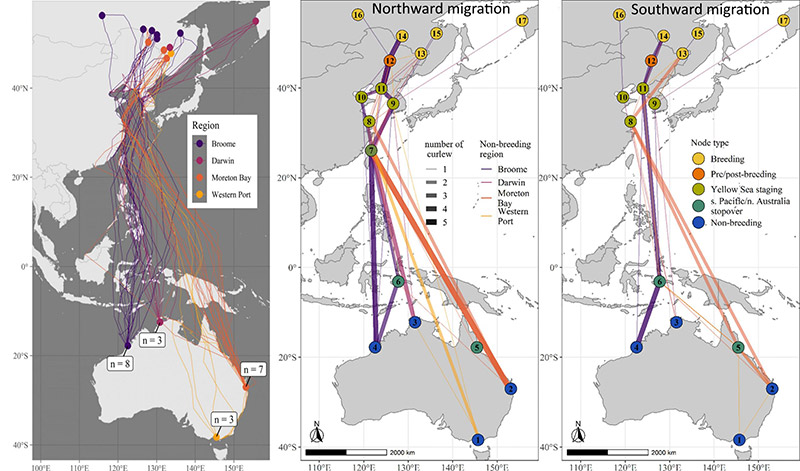
Migratory connectivity of far-eastern curlews
Far eastern curlew starting from more southerly nonbreeding regions departed earlier than those occupying northerly nonbreeding regions. Moreover, birds from southeast Australia non-breeding sites generally went to breed at lower latitudes than those from northwest Australia. Thus, at the breeding grounds there was not much mixing among curlew from different non-breeding areas. However, at migratory stopover and staging sites in the Yellow Sea, mixing between the southeastern and northwestern non-breeding populations was observed within three (of four) of the staging nodes during northward migration, and at two of the southward migration staging nodes.
Human impacts
The human impact was evaluated using a global human modification map. The human modification map combines 13 spatially explicit stressors, including human settlement and agriculture, into a 1-km2 resolution metric of cumulative human modification of terrestrial lands. The analysis was focused on the nonbreeding and breeding regions.
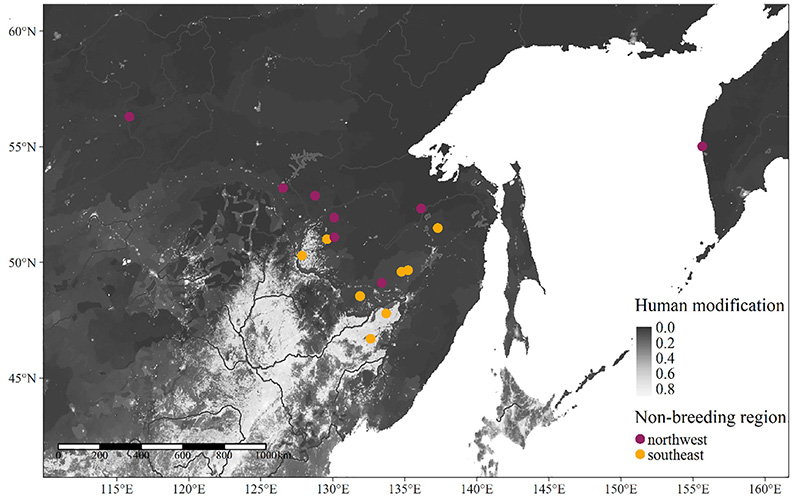
The different breeding regions do not have the same level of human modifications. Since the breeding site locations are related to the nonbreeding regions, this translates to curlew from southeastern Australia facing increased impact of human modification than curlew from northwestern Australia. The same is true at the other end of their migration, where nonbreeding regions in southeastern Australia have grater human modification, than nonbreeding regions in northwestern Australia.
This suggests that declines of the far eastern curlew population in southeastern Australia vs the stability of the northwestern populations, may be explained by birds occurring in areas where they encounter increased human modification and pressures on their habitat.
Protection of habitats for migratory species
This study shows that observing the full annual cycle is important in interpreting the dynamics of migratory species. Recording both legs of their migratory journeys, including stopover and staging sites along the trip, and environmental information at each step, is of foremost importance to assessing their responses to environmental change. This approach should help in identifying threats and informing protection of habitats for migratory species such as the endangered far eastern curlew.
Reference
Morrick, Z. N., Lilleyman, A., Fuller, R. A., Bush, R., Coleman, J. T., Garnett, S. T., Gerasimov, Y. N., Jessop, R., Ma, Z., Maglio, G., Minton, C. D. T., Syroechkovskiy, E., & Woodworth, B. K. (2021). Differential population trends align with migratory connectivity in an endangered shorebird. Conservation Science and Practice, e594. https://doi.org/10.1111/csp2.594
Main Photo: A far eastern curlew with an Argos PTT (the antenna only is visible) (credit Robert Bush at Toorbul, Moreton Bay, Queensland, Australia)

